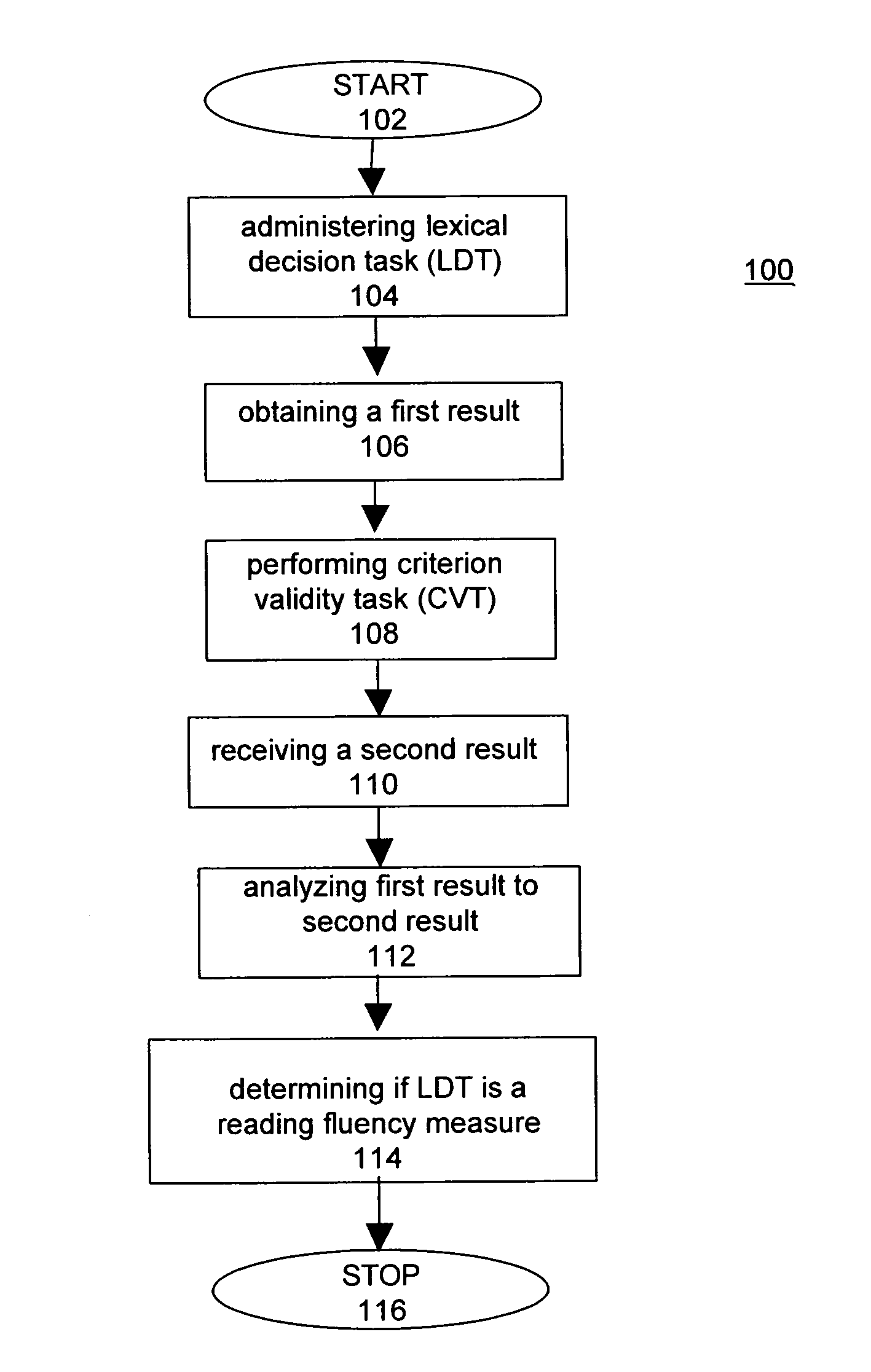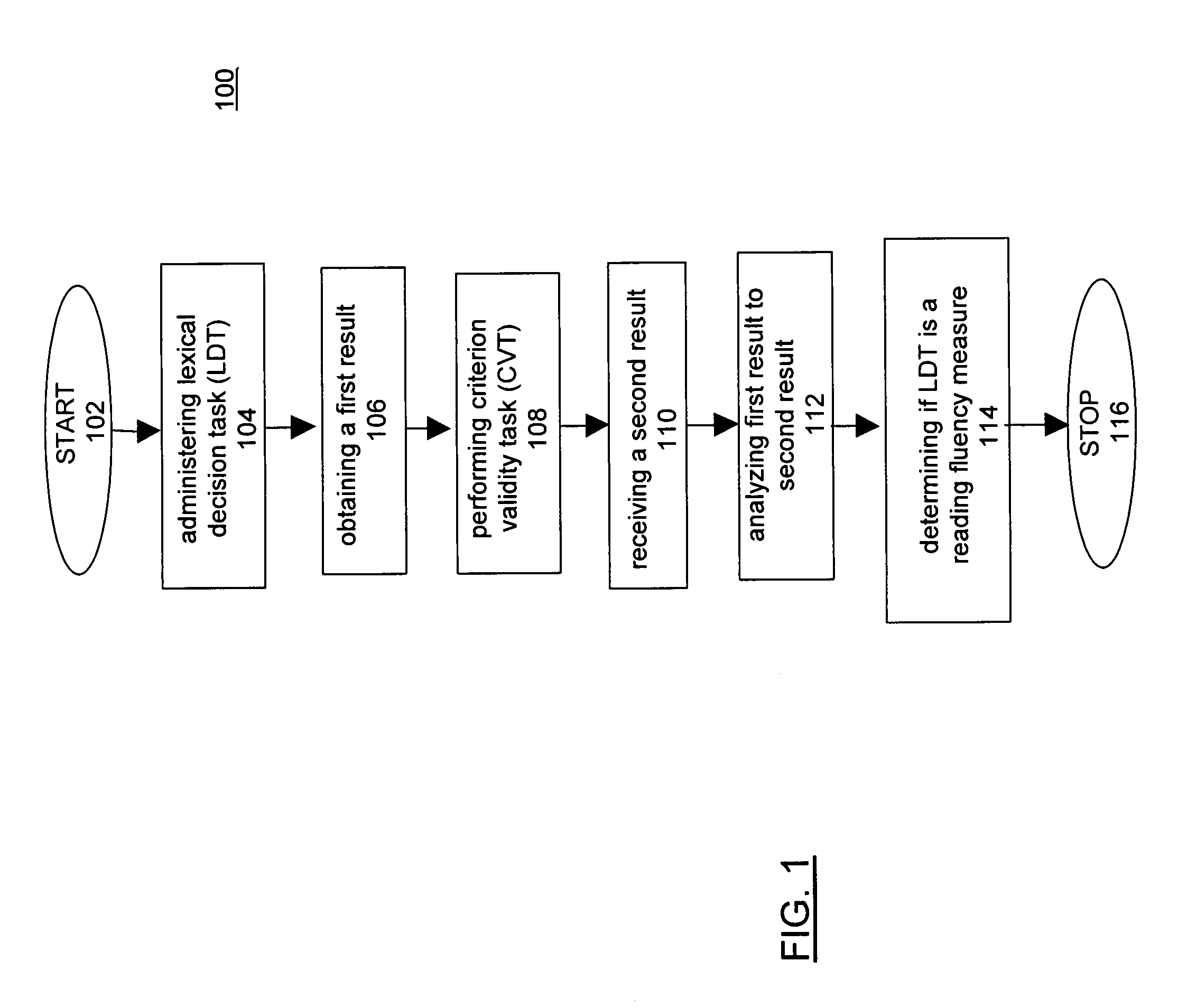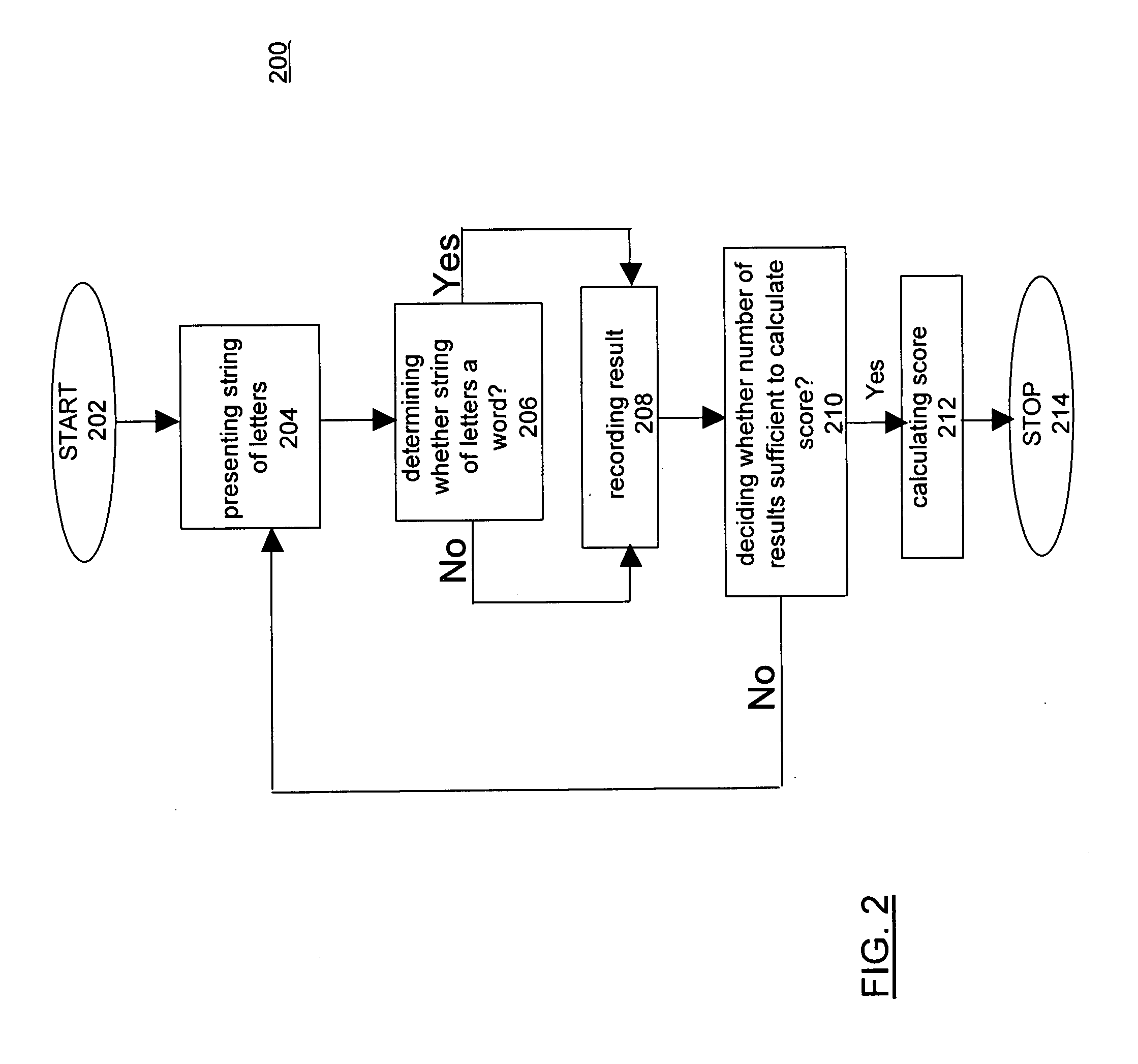System and methods for a reading fluency measure
a reading fluency and measurement system technology, applied in the field of fluency, can solve problems such as inability to comprehend at the same time, and achieve the effect of monitoring the progress of students
- Summary
- Abstract
- Description
- Claims
- Application Information
AI Technical Summary
Benefits of technology
Problems solved by technology
Method used
Image
Examples
Embodiment Construction
[0044]The present invention measures reading fluency of any language by a participant. The measurement of the visual unit of word recognition correlates with the fluency of a participant.
[0045]In order to determine whether the lexical decision task is a feasible system and methods for measuring reading fluency, the task was correlated with to criterion validity task (“CVT”). FIG. 1 is a flow chart of the determination of the lexical decision task as a reading fluency measure, i.e., LDT Reading Fluency test 100. The present invention begins at step 102 with administering the lexical decision task at step 104. The lexical decision task includes presenting a string of letters, and a participant determines if the sting of letters formulates a word. The string of letters is either randomly or sequentially presented from a database of a collection of words and non-words. The database ranges from high frequency to low frequency words. The LDT Reading Fluency test is described more fully in...
PUM
 Login to View More
Login to View More Abstract
Description
Claims
Application Information
 Login to View More
Login to View More - R&D
- Intellectual Property
- Life Sciences
- Materials
- Tech Scout
- Unparalleled Data Quality
- Higher Quality Content
- 60% Fewer Hallucinations
Browse by: Latest US Patents, China's latest patents, Technical Efficacy Thesaurus, Application Domain, Technology Topic, Popular Technical Reports.
© 2025 PatSnap. All rights reserved.Legal|Privacy policy|Modern Slavery Act Transparency Statement|Sitemap|About US| Contact US: help@patsnap.com



